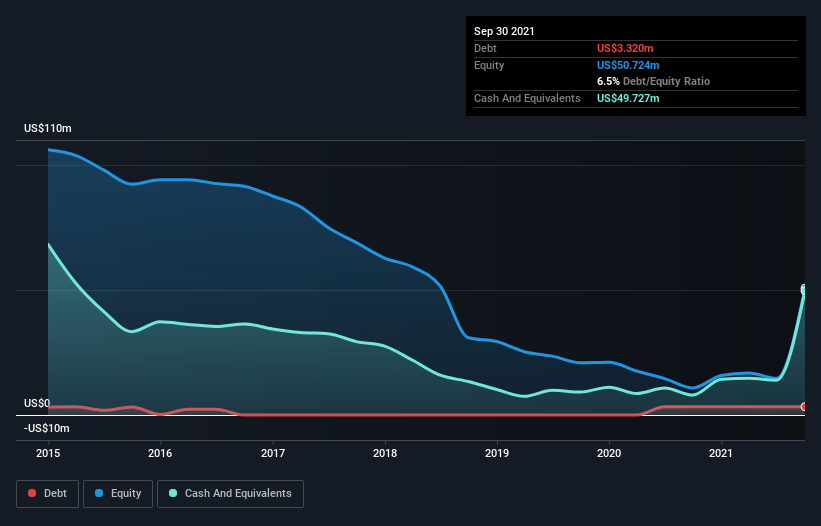Marin Software (NASDAQ:MRIN) Has Debt But No Earnings; Should You Worry?
David Iben put it well when he said, 'Volatility is not a risk we care about. What we care about is avoiding the permanent loss of capital.' So it might be obvious that you need to consider debt, when you think about how risky any given stock is, because too much debt can sink a company. We note that Marin Software Incorporated (NASDAQ:MRIN) does have debt on its balance sheet. But the more important question is: how much risk is that debt creating?
What Risk Does Debt Bring?
Debt and other liabilities become risky for a business when it cannot easily fulfill those obligations, either with free cash flow or by raising capital at an attractive price. In the worst case scenario, a company can go bankrupt if it cannot pay its creditors. While that is not too common, we often do see indebted companies permanently diluting shareholders because lenders force them to raise capital at a distressed price. Having said that, the most common situation is where a company manages its debt reasonably well - and to its own advantage. The first step when considering a company's debt levels is to consider its cash and debt together.
See our latest analysis for Marin Software
What Is Marin Software's Debt?
The chart below, which you can click on for greater detail, shows that Marin Software had US$3.32m in debt in September 2021; about the same as the year before. However, its balance sheet shows it holds US$49.7m in cash, so it actually has US$46.4m net cash.
How Healthy Is Marin Software's Balance Sheet?
According to the last reported balance sheet, Marin Software had liabilities of US$12.1m due within 12 months, and liabilities of US$2.25m due beyond 12 months. Offsetting this, it had US$49.7m in cash and US$4.61m in receivables that were due within 12 months. So it actually has US$40.0m more liquid assets than total liabilities.
This surplus strongly suggests that Marin Software has a rock-solid balance sheet (and the debt is of no concern whatsoever). Having regard to this fact, we think its balance sheet is as strong as an ox. Simply put, the fact that Marin Software has more cash than debt is arguably a good indication that it can manage its debt safely. There's no doubt that we learn most about debt from the balance sheet. But you can't view debt in total isolation; since Marin Software will need earnings to service that debt. So if you're keen to discover more about its earnings, it might be worth checking out this graph of its long term earnings trend.
Over 12 months, Marin Software made a loss at the EBIT level, and saw its revenue drop to US$26m, which is a fall of 24%. That makes us nervous, to say the least.
So How Risky Is Marin Software?
Statistically speaking companies that lose money are riskier than those that make money. And we do note that Marin Software had an earnings before interest and tax (EBIT) loss, over the last year. Indeed, in that time it burnt through US$7.9m of cash and made a loss of US$10m. However, it has net cash of US$46.4m, so it has a bit of time before it will need more capital. Overall, its balance sheet doesn't seem overly risky, at the moment, but we're always cautious until we see the positive free cash flow. When analysing debt levels, the balance sheet is the obvious place to start. However, not all investment risk resides within the balance sheet - far from it. For instance, we've identified 3 warning signs for Marin Software (1 is a bit unpleasant) you should be aware of.
If, after all that, you're more interested in a fast growing company with a rock-solid balance sheet, then check out our list of net cash growth stocks without delay.
This article by Simply Wall St is general in nature. We provide commentary based on historical data and analyst forecasts only using an unbiased methodology and our articles are not intended to be financial advice. It does not constitute a recommendation to buy or sell any stock, and does not take account of your objectives, or your financial situation. We aim to bring you long-term focused analysis driven by fundamental data. Note that our analysis may not factor in the latest price-sensitive company announcements or qualitative material. Simply Wall St has no position in any stocks mentioned.
Have feedback on this article? Concerned about the content? Get in touch with us directly. Alternatively, email editorial-team (at) simplywallst.com.

 Yahoo Finance
Yahoo Finance 
